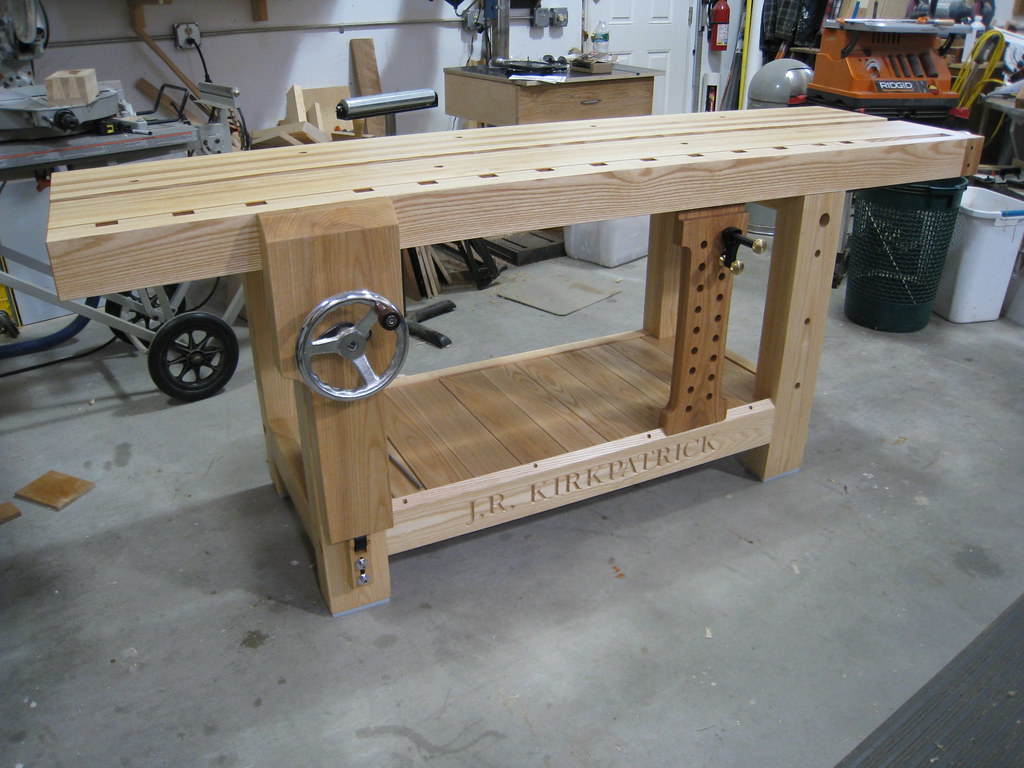I have several exterior door projects in my near future and am looking VERY hard at building a Roubo workbench based on the Benchcrafted plans. Fact is, I'd love to have that workbench in my shop.
My 'issue' is that I have never worked on a narrow 24-inch wide workbench. All of my workbenches have been at least 30-inches wide. Perhaps the truth to building 80"x36" doors is that the only time a wide surface is required is during glue-up. The rest of the door construction is plunging domino mortises, planing, etc. on individual members.
Perhaps I just answered my own question?
Someone is probably going to say, 'Well, why don't you just make the top wider?' Great question, but as I understand it the 4-inch x 87-inch top (as shown in the plans) weighs - from what I have read- nearly two-hundred pounds or so. So adding 6-inches more to the width of the top? [scared] Ok, so I'll order a couple of cranes and I should be good to go. Yes? [wink]
I like some feedback on those who construct doors on narrow workbenches.
Thanks!
My 'issue' is that I have never worked on a narrow 24-inch wide workbench. All of my workbenches have been at least 30-inches wide. Perhaps the truth to building 80"x36" doors is that the only time a wide surface is required is during glue-up. The rest of the door construction is plunging domino mortises, planing, etc. on individual members.
Perhaps I just answered my own question?
Someone is probably going to say, 'Well, why don't you just make the top wider?' Great question, but as I understand it the 4-inch x 87-inch top (as shown in the plans) weighs - from what I have read- nearly two-hundred pounds or so. So adding 6-inches more to the width of the top? [scared] Ok, so I'll order a couple of cranes and I should be good to go. Yes? [wink]
I like some feedback on those who construct doors on narrow workbenches.
Thanks!





